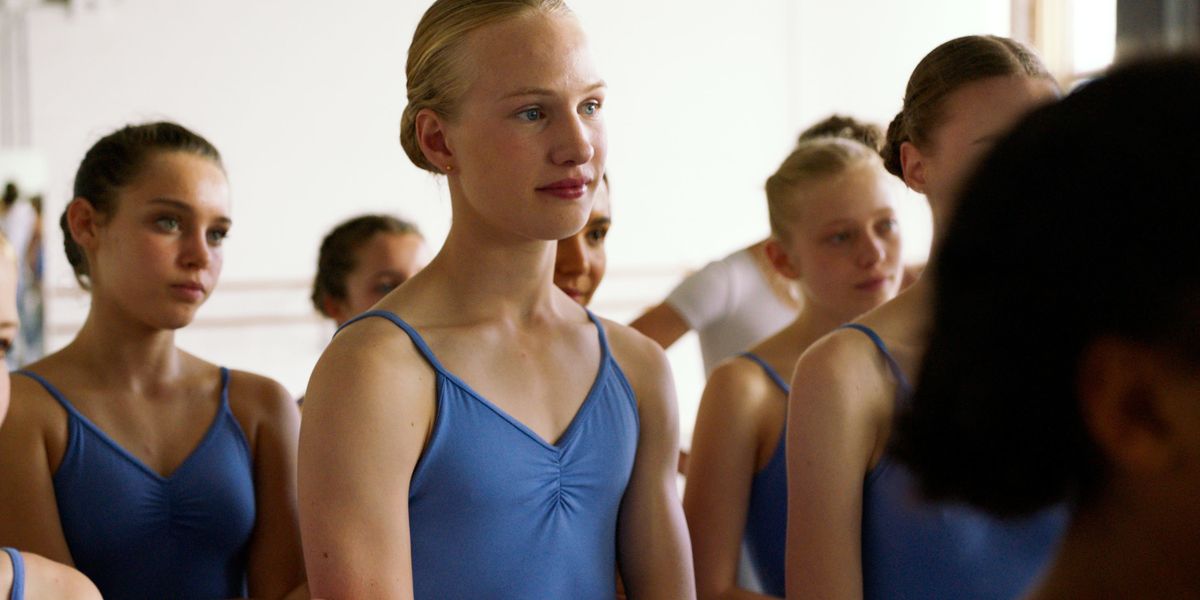Girl Was Called "the Most Dangerous Movie About a Trans Character in Years"—But It Helped Its Subject Learn to Love Herself
Before she watched her life play out on screen, transgender dancer Nora Monsecour never felt she could truly connect with a character in a film.
And though Girl—which was released on Netflix today after being highly awarded at the Cannes Film Festival last year—isn’t a biography, “the essence of the story is the same,” says Monsecour. “A trans girl with a big dream, finding the strength to pursue this career. It was very emotional to watch. It’s very strange when you recognize yourself so closely.”
Girl
follows Lara, a trans girl and aspiring ballet dancer who is frustrated that her hormone therapy isn’t working fast enough and that her body is different from the other girls in her class. And though the film has one moment of bullying, overall, Lara is supported in her dream to be a ballet dancer.

Monsecour, who is now a young adult, had a rather different experience in ballet. “When I was Lara’s age, it was very hard and I had to fight against a lot of opposition.” She was bullied, and had teachers who “didn’t believe that transgender was something that existed in the world.”
It’s not that Girl sugarcoats Monsecour’s life. In fact, the film has been criticized by the trans community for its “disturbing fascination with trans bodies.” (The camera often lingers on Lara’s groin, and there are gruesome moments of her removing tape from her genitals as well as a violent final scene.) This is one of many issues posed in The Hollywood Reporter by transgender critic Oliver Whitney, who calls it “the most dangerous movie about a trans character in years” and who notes that the film’s depiction of hormone therapy is harmfully misleading. Monsecour responded to his essay, writing that “those criticizing Girl are preventing another trans story from being shared in the world, and are also attempting to silence me and my trans identity.”
Monsecour also argues that Girl‘s obsession with the body is only realistic for a film with ballet as its subject matter. “I wanted the ballet class scenes to be as pure and honest as possible,” she says. “I wanted to see the struggle she had to maintain her focus. When I was 11 or 12 in the studio, I had a leotard on like all the girls, but my body was that of a little boy. So I was busy with, ‘Is anyone going to see my body parts? Am I dancing like a girl?’ ”

Kris Dewitte, Courtesy Netflix
The dance scenes do feel authentic, thanks in part to Monsecour’s heavy involvement in the film. In addition to attending dance rehearsals and being on set, Monsecour read each version of the script, sending edits to director and writer Lukas Dhont, who originally approached her about making the film after reading about her story. As the years went by, says Monsecour, it became like “working on something with a friend.”
Another source of controversy: Lara is not played by a trans performer, but a cisgender male dancer, Victor Polster. Monsecour told IndieWire that she wasn’t concerned about whether the actor who played her was trans or not. “I didn’t see Victor as a male actor going to play a trans role,” she told writer Jude Dry. “I really felt that he was the one person that could give this role life in a way that would pay respect to my story.” (Dhont and his co-writer, Angelo Tijssens, are also both cis men. Dhont recently defended the film in The Guardian.)
Monsecour says that Polster, who is a student at Antwerp’s Royal Ballet School, is now a close friend, who often asks her for advice on becoming a professional dancer. “We can really connect on that level,” she says. “I have so much appreciation for him.” Monsecour wanted Polster to have the freedom to interpret the character in his own way. “But he knew a lot of background of my story,” she says. “He’s so open and really wanted to understand and respect my journey.”
Monsecour’s story differs from Lara’s in another notable way: At age 14, Monsecour was “pushed away from the ballet world. It’s a system that’s very much in terms of male and female.” She began studying contemporary dance. “I fell in love with it completely,” she says. “You really find yourself in the aesthetic.” She went on to study at the Northern School of Contemporary Dance in England, and is currently in her first year as a company member with tanzmainz in Germany, dancing works by choreographers like Roy Assaf and Felix Berner.
Girl
has opened doors for Monsecour, including the opportunity to write a book, which she’s currently working on. The film was also Belgium’s submission for the Oscars’ Best Foreign Film award, and was nominated for a Golden Globe. Watching Girl for the first time was “liberating,” says Monsecour. “It made me proud of my journey.” But, she says, “the biggest thing is that I found acceptance for myself. I always tried to hide behind this mask of being the perfect girl. After seeing so many people love the film, now I should maybe love myself.”




